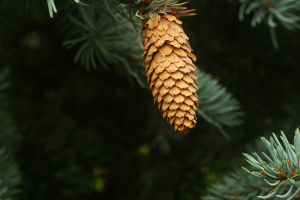Pine nuts, the edible seeds of pine trees, belong to the Pinaceae family and are globally distributed, making them a delicacy celebrated across various cultures.
These small yet flavorful seeds have a rich history and versatile applications in culinary traditions.
Distinctive Features of Pine Nuts:
Shape and Size: Pine nut fruits typically assume an oval shape, measuring approximately 1 to 2 centimeters in length. They boast a rigid outer shell that houses the robust seeds.
Shell: The husk of pine nut fruit is characteristically tough and necessitates effort to crack open, revealing the prized seeds within. Variations in texture and color of husks exist, depending on the pine tree species.
Seeds: Pine nut seeds are the focal point of the pine nut fruit. Sporting a light yellow hue, they exhibit a slightly elliptical form and a smooth surface. Pine nuts, the delectable part of the seed, lie within.
Flavor Profile: Pine nuts boast a delightful nutty taste coupled with a robust nutty fragrance and a subtle hint of pine.
Origins of Pine Nuts:
Pine nuts derive from pine trees, which fall under the Pinaceae plant family. These hardy trees thrive across the globe, particularly in the temperate and boreal regions of the Northern Hemisphere.
Nutritional Value of Pine Nuts:
Protein: Pine nuts are rich in protein, making them an excellent choice for vegetarians and individuals with elevated protein requirements.
Healthy Fats: Abundant in monounsaturated and polyunsaturated fatty acids like oleic and linoleic acids, pine nuts contribute to heart health.
Dietary Fiber: Containing dietary fiber, pine nuts promote digestive well-being.
Vitamins and Minerals: Pine nuts offer essential trace elements, including vitamin E, vitamin K, zinc, magnesium, manganese, and copper.
Antioxidants: Notably, vitamin E functions as a potent antioxidant, safeguarding cells against the detrimental effects of free radicals.
Caloric Content: Although pine nuts have a relatively higher caloric count, moderate consumption provides a valuable source of energy.
Satiety Boost: The high protein and healthy fat content of pine nuts promote a sense of fullness, aiding in appetite control.
Cholesterol Regulation: Research suggests that pine nut consumption may assist in lowering levels of LDL cholesterol, thereby enhancing heart health.
Culinary Applications of Pine Nuts:
Salads: Pine nuts enhance salads with their nutty crunch and aroma.
Pasta: Pine nuts find their way into classic Italian dishes like pesto, often served alongside pasta.
Pastries: Pastries and breads benefit from pine nuts, infusing them with a delightful nutty flavor.
Pine Nut Sauce: Pine nuts serve as a key ingredient in creating pine nut sauce, a delectable accompaniment to pasta, fish, or vegetables.
Stews: In certain stews and roasts, pine nuts contribute both texture and flavor.
Snacks: Pine nuts can be enjoyed as standalone snacks or combined with other nuts and dried fruits to craft a delectable trail mix.
Confections and Chocolates: Pine nuts occasionally feature in candies and chocolates, delivering a nutty essence and texture to sweet treats.
In conclusion, pine nuts are not merely a gastronomic delight but also bear cultural and symbolic significance. Be it as an ingredient in everyday meals or a token of celebration, pine nuts hold a cherished place in cuisines worldwide.


